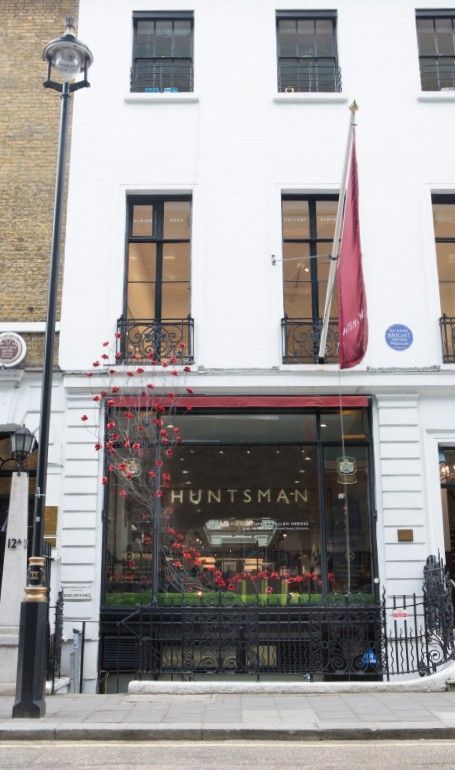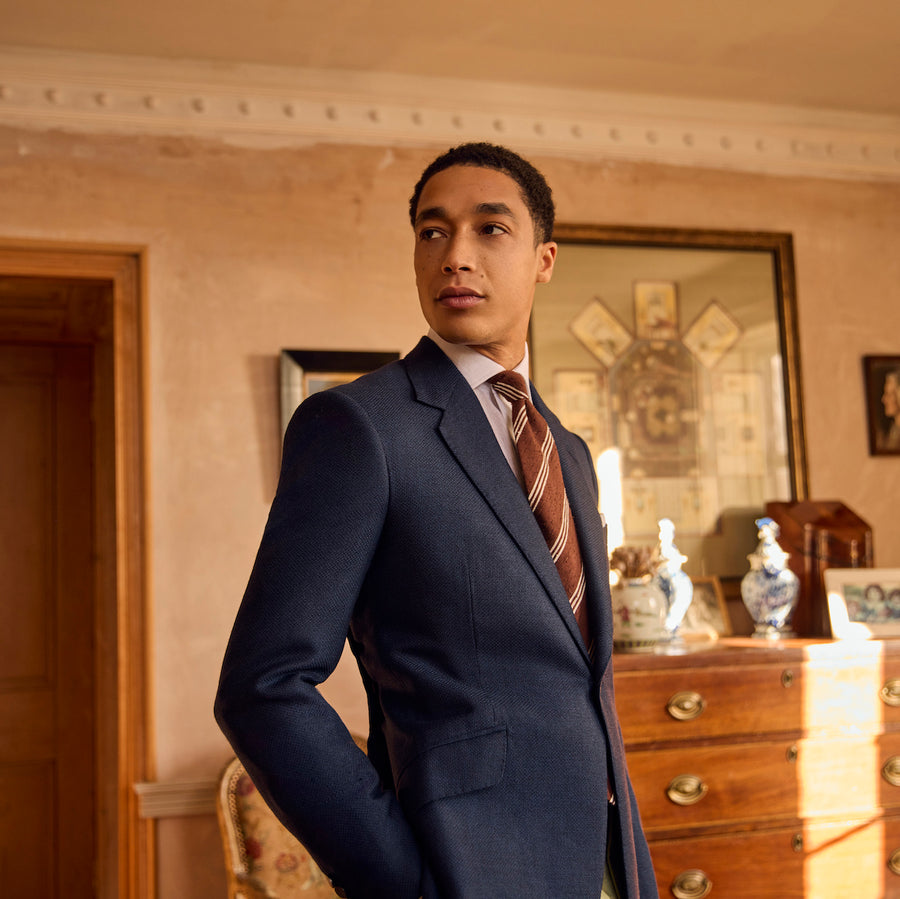Treasures from Chatsworth EPISODE 8 - THE CHANGING FACE OF PORTRAITURE
Conceived by Sotheby’s and presented by Huntsman, ‘Treasures from Chatsworth’ celebrates the Cavendish family’s centuries-long passion for art and collecting. Conceived by Sotheby’s and presented by Huntsman, ‘Treasures from Chatsworth’ celebrates the Cavendish family’s centuries-long passion for art and collecting. The partnership between Huntsman and the Sotheby’s series, strikes a chord with the heritage that Huntsman represents . The way in which contemporary designs are influenced by those of previous generations of craftsmen resonates with the stories that Sotheby’s has woven through this series of films. Watch Episode 8 of Treasures from Chatsworth, Presented by Huntsman and Produced by Sotheby's IN FLANDERS FIELDS THE POPPIES BLOW When Pierre Lagrange bought Huntsman in 2013 he was intrigued to discover that the tailor had customer records dating back decades. Spreadsheets had replaced a paper card system, which in turn had taken the place of vast ledgers, so heavy it’s a strain to pick them up. In there he found the names of actors, musicians, politicians, writers, lawyers, entrepreneurs, aristocrats and royalty.
 But there were plenty more names of course, those of little-known men and women whose details had been faithfully recorded by their tailor at the time. Each might have a note added when their title or rank changed, a newspaper clipping stuck to the page, a comment made about payment. These were stories in miniature, evidence of the personal relationship between customer and tailor, passing through the years.
But there were plenty more names of course, those of little-known men and women whose details had been faithfully recorded by their tailor at the time. Each might have a note added when their title or rank changed, a newspaper clipping stuck to the page, a comment made about payment. These were stories in miniature, evidence of the personal relationship between customer and tailor, passing through the years.
“It’s quite emotional, when you look at our ledgers,” says Huntsman general manager Carol Pierce. “You see the beautiful handwriting, the detail of how everything was recorded and you realise the time it must have taken to keep those books completely up to date.” The final list of losses came to 133.
THE POPPIES ON DISPLAY IN HUNTSMAN'S WINDOW At the centenary of Britain’s first involvement in the First World War, Lagrange invited historian Niall Ferguson to examine the archive, and see what light could be shed on those years at the tailors. As Ferguson turned page after page of customer records, the evidence accumulated. Killed in action. Killed in action. Killed in action. The tailors had noted the promotions of their customers, and their end. “It’s quite emotional, when you look at our ledgers,” says Huntsman general manager Carol Pierce. “You see the beautiful handwriting, the detail of how everything was recorded and you realise the time it must have taken to keep those books completely up to date.” The final list of losses came to 133. THE TAILORS HAD CAREFULLY RECORDED THE FATE OF THEIR CUSTOMERS
Lagrange felt compelled to honour this sacrifice in some way. That year, artists Paul Cummins and Tom Piper, marking British fatalities in the war, had planted nearly 900,000 ceramic poppies at the Tower of London. “It was so simple, so perfect, so proud,” says Lagrange. When the poppies were then sold to raise money for service charities, he bought 133.
In November 2015, he arranged his own tribute at 11 Savile Row. Flowing from the floor above came a cascade of poppies, sweeping past the window as though caught in the wind, before passing through the glass, to rest beside a single British Warm coat, inspired by the great coat worn by officers in the First World War. Etched on the glass was the Huntsman Roll of Honour: the name of each customer who’d given his life to his country.
HUNTSMAN WINDOW IN NOVEMBER 2015
The window drew considerable attention from passers-by and the media alike. Many people felt compelled to come into the shop, find out more about its history and share their own family stories. The archive told a further story too. The tailor hadn’t followed up on any outstanding bills for those who’d fallen. What had happened to the staff at Huntsman during those years, no one yet knows.
THE TAILORS HAD CAREFULLY RECORDED THE FATE OF THEIR CUSTOMERS
Lagrange felt compelled to honour this sacrifice in some way. That year, artists Paul Cummins and Tom Piper, marking British fatalities in the war, had planted nearly 900,000 ceramic poppies at the Tower of London. “It was so simple, so perfect, so proud,” says Lagrange. When the poppies were then sold to raise money for service charities, he bought 133.
In November 2015, he arranged his own tribute at 11 Savile Row. Flowing from the floor above came a cascade of poppies, sweeping past the window as though caught in the wind, before passing through the glass, to rest beside a single British Warm coat, inspired by the great coat worn by officers in the First World War. Etched on the glass was the Huntsman Roll of Honour: the name of each customer who’d given his life to his country.
HUNTSMAN WINDOW IN NOVEMBER 2015
The window drew considerable attention from passers-by and the media alike. Many people felt compelled to come into the shop, find out more about its history and share their own family stories. The archive told a further story too. The tailor hadn’t followed up on any outstanding bills for those who’d fallen. What had happened to the staff at Huntsman during those years, no one yet knows.
 Given the number of documents that remain to be read, their details may still be found. What we do know is that many of the men of Savile Row volunteered in the Great War, and only some returned. When they did, they found their jobs waiting for them. We can only assume the same happened at Huntsman too.
Words by Emma Lawson
Given the number of documents that remain to be read, their details may still be found. What we do know is that many of the men of Savile Row volunteered in the Great War, and only some returned. When they did, they found their jobs waiting for them. We can only assume the same happened at Huntsman too.
Words by Emma Lawson

